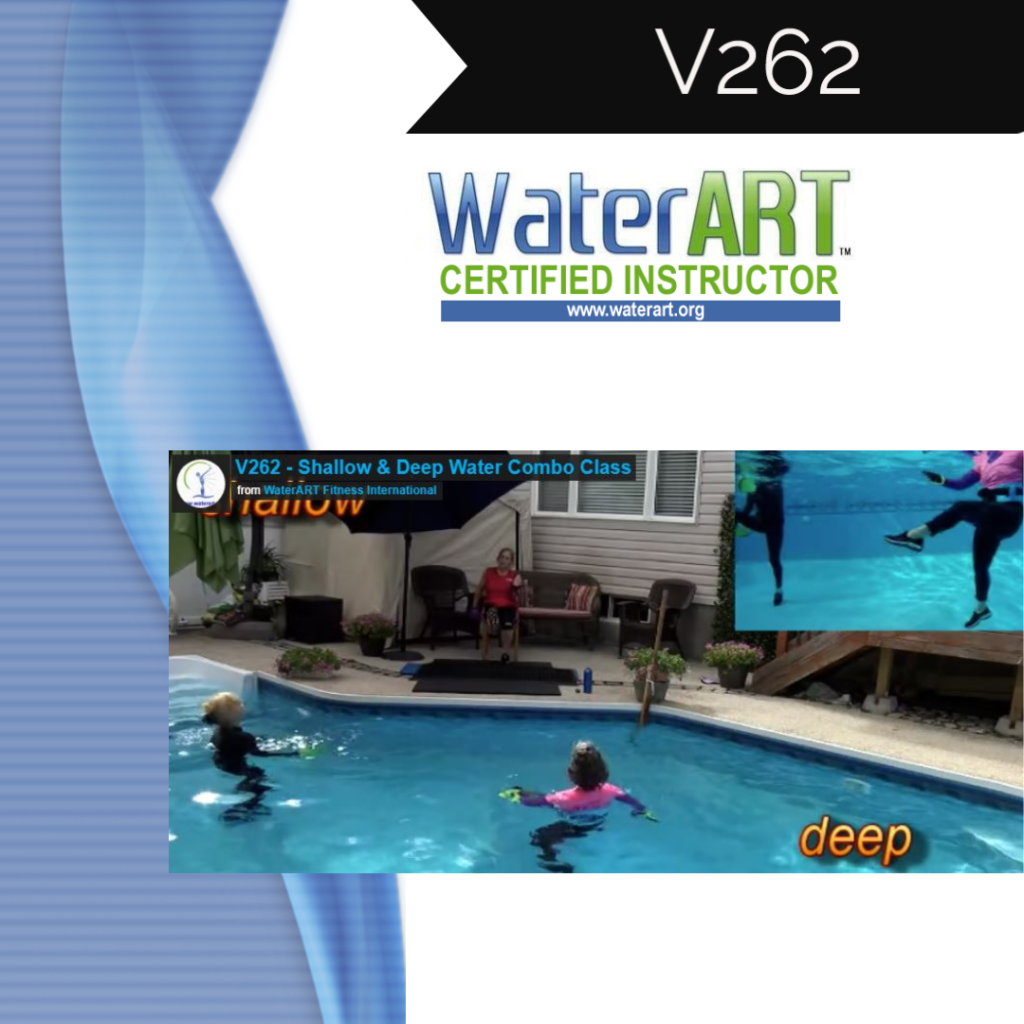Shallow & Deep Water Aqua Fitness offers
- Opportunities to train both water depths simultaneously
- Offers unique techniques yet may have similar movements
- Allows your students to choose their preferred water depth
- Offers more space for everyone may move freely
- Often is necessary when pool has both depths and limited “perfect shallow depth”
- Gives clients the option to cross train in a program or change up their workout regularly
Offering a combination of shallow and deep water training within one program can add room to an over-full class. This solution provides students with more space to move safely, using more travel patterns for a better workout.
It is possible to teach exercises to target the same biomechanics or fitness component in a combined shallow/deep program for both cardiovascular and muscle conditioning, but, the instructor must be prepared to teach options for these moves with suitable demonstration for both depths. Demonstrations should relate to the difference in movements required for the group in shallow water (with feet in contact with the pool floor) as well as any change needed for the group in deep (with no bottom contact). Each group must be trained to use the correct working or body positions, maintain good body alignment and perform each movement correctly using their (own) best ROM. The instructor must keep both groups moving realizing that the speed of movement may change between depths so adjustments for levels of intensity and/or modifications must be offered for each exercise.
Both depths provide unique benefits for training but, no two people can realistically move at the same speed or range of motion in the water. Therefore the instructor must design a program that can be adjusted to suit each individual. Since “one size does not fit all” this learning curve – is the key to success for a “dual-depth” class. The Instructor should be able to keep everyone motivated, moving and energized. But the “rule of thumb” stays the same for both ends of the pool. Always allow your participants to “work-out at their own personal best pace”.
There is one major decision required for this type of class: “which depth is the most suitable for each participant to allow everyone to get a good workout from their time in the pool?”
Generally speaking, the Instructor should be able to suggest the most suitable depth for each participant. Some people may have a natural preference for water depth so the choice may be obvious but for others they may be better to stay in a water depth they can control. Assume at all programs there will be “regulars” who are very comfortable and those who may be fearful of taking both feet off the pool floor. A good suggestion is to encourage patrons to cross train so that they may burn 30 % more calories and benefit with total body training. Reality is that most people tend to stay in the same water depth and do the same “old” exercise program. Realize variety has its benefits and the goal is to keep both groups moving and benefitting. Teaching two depths is significantly challenging because shallow water may yield more quicker speeds and directional changes with CV being more easily trained while DWT offers slower movement with greater core and muscular endurance benefits.


